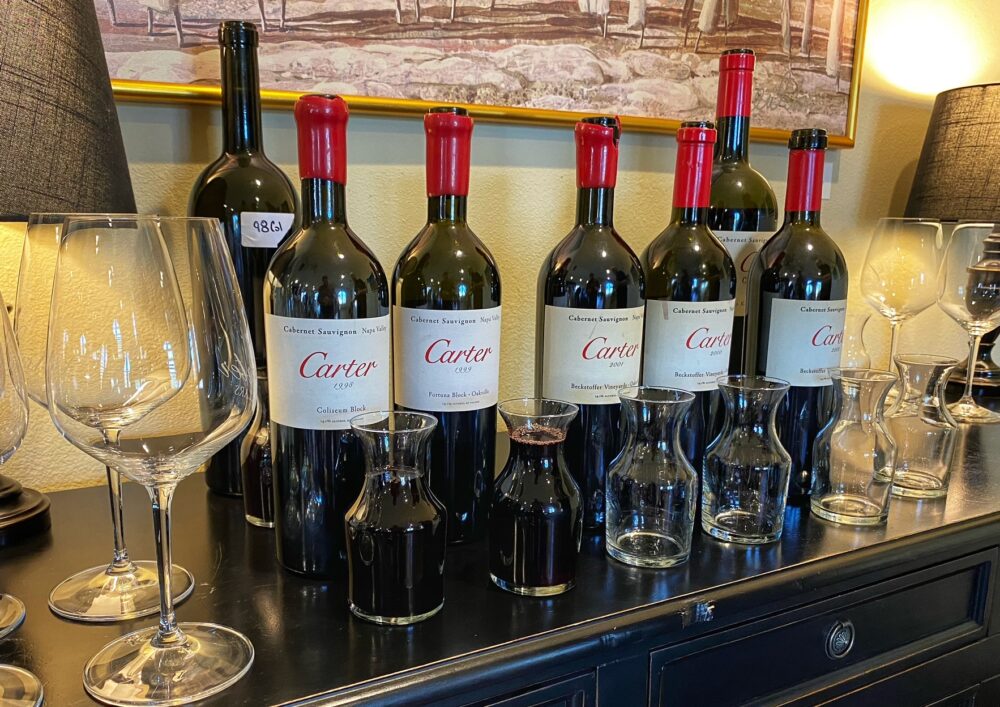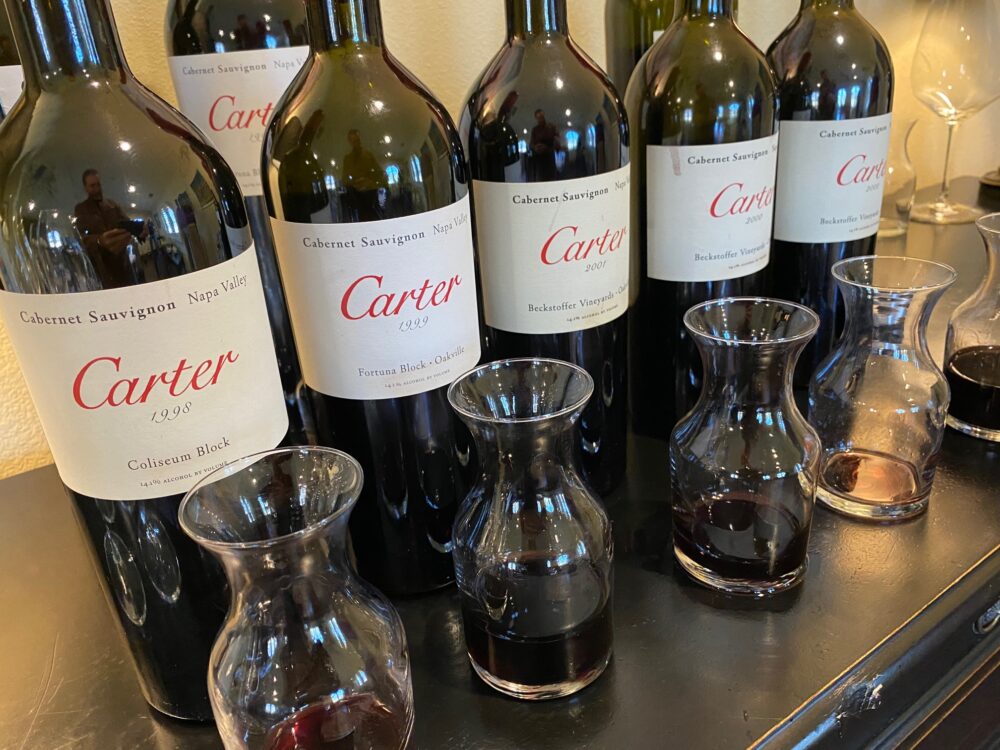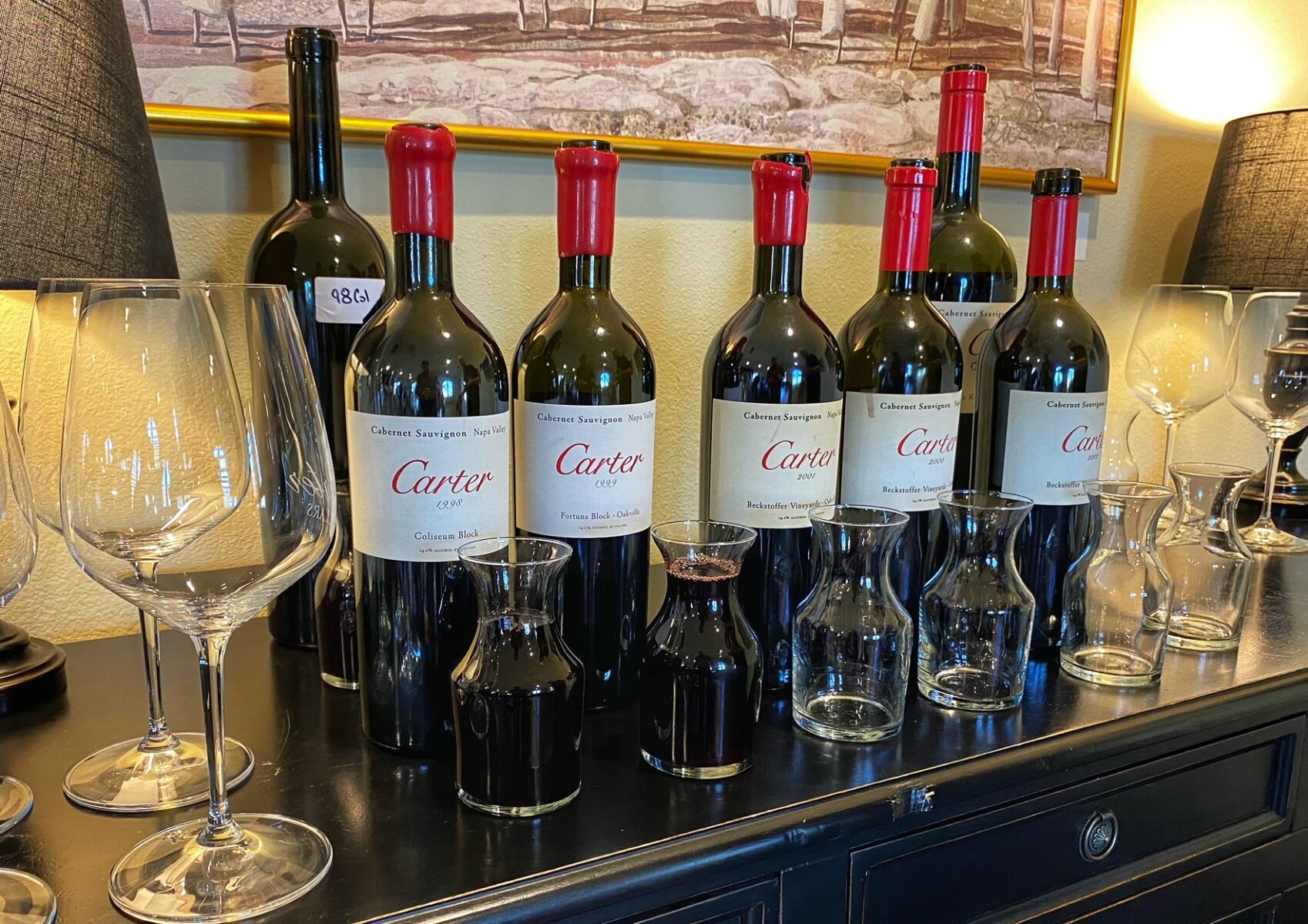
This retrospective focuses on Carter Cellars, founded in 1998 by Mark Carter. Prior to starting Carter Cellars, Mark ran a well-known hotel and restaurant in Eureka, CA called the Carter House Inn, and his love of wine, as well as the connections he made at the restaurant, led him to launch Carter Cellars with the goal of making world-class Cabernet Sauvignon from the top sites in Napa Valley.
While Carter’s inaugural release was sourced from the Coliseum Block in the Hossfeld Vineyard, in 2000 Mark was able to get access to what is arguably one of the greatest terroirs in the valley, the To Kalon Vineyard. From 2000 to 2009, Carter produced a single Cabernet Sauvignon from the same block of To Kalon, released under their Cabernet Sauvignon Beckstoffer To Kalon Vineyard label. The one exception was in 2003, when some neighboring rows were mistakenly harvested, requiring them to bottle their 2003 under a one-off H&C label. (The 2004 has this same label but comes from the original plantings/block.)
In 2010, when the estate got access to additional blocks, the Cabernet Sauvignon Beckstoffer To Kalon Vineyard was renamed the Cabernet Sauvignon Beckstoffer To Kalon Vineyard The O.G., and two new cuvées from To Kalon were added – The Three Kings and The Grand Daddy (which also saw a tiny amount produced in 2009).
All three of these cuvées from the To Kalon Vineyard started as clonal selections, with the original O.G. coming from wider plantings of Clone 337, the Three Kings focusing on Clone 7, and the Grand Daddy focusing on Clone 4. However, as of 2015, these wines have moved slightly away from a strict clonal selection and are now blends, although they generally retain their original styles. At a high level, The Three Kings is the most opulent and sexy, The Grand Daddy is more fruit-forward and ready-to-go, and The O.G. is generally the most structured and age-worthy.
In 2012, Carter released their first cuvée from the Las Piedras Vineyard outside St. Helena. This remained a single cuvée from 2012 through 2014, but in 2015 they were able to acquire additional rows and created a new La BAM Cuvée. Coming from a slightly warmer terroir and soils that hold a touch more moisture, this cuvée is always a more opulent, forward Cabernet Sauvignon. The classic Las Piedras, which comes from the original poorer, rocky soils, was renamed La Verdad in 2015. The La Verdad comes from two rows of Clone 4 Cabernet Sauvignon, and this is always a more structured, concentrated release compared to the La BAM. In 2018, the addition of rows from A Block, which is further west on a hillside parcel, led to the creation of the Beckstoffer Las Piedras Vineyard Los Compadres cuvée. Based largely on a 2001 planting, this is a tiny production cuvée of Clone 337.
Lastly, the G.T.O., which stands for (G)rand Daddy, (T)hree Kings, and (O)G, was first introduced in 2012 (a tiny amount was made in 2011) and started out as a cellar selection from the three parcels. Today, the G.T.O. is based largely on Clone 6 (which is also the base of Schrader’s Old Sparky) with smaller amounts of 337, 4, and 7.

The impressive succession of winemakers at Carter began with Nils Venge (1998 to 2004), followed by Jeff Fontella (2004 to 2009), and Mike Smith (2009 to 2018), with newer vintages made by Russel Bevan. Looking at the vintages reviewed here, all were made using a similar four-day cold soak and vinified in stainless steel tanks, with two pump-overs per day and a total of 14 days on skins. The wines see malolactic fermentation in barrel, and the élevage is 16-18 months in new French oak, with Darnajou and Taransaud making up the majority of the barrels.
As I hope my reviews show, these are stunning wines that show well in their youth yet evolve gracefully. And despite the different winemakers, they display a clear, consistent theme of purity, balance, and opulence across the wines and vintages. While consistently high, the quality seems to have taken a small step up starting with the 2012 and 2013 vintages, and recent vintages are loaded with incredible wines. In addition, readers can expect current vintages to not only drink well in their youth but to have two to three decades of overall longevity. In short, these are brilliant wines.
The Tasting
All of these wines were tasted at the estate in 2022.

